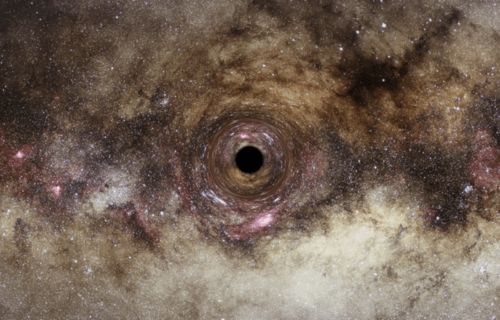DURHAM, United Kingdom — An “ultramassive” black hole hundreds of millions of light years from Earth is one of the biggest on record, a new study reveals. It is 30 billion times the mass of our Sun, a scale rarely seen by astronomers.
The international team took advantage of a phenomenon known as gravitational lensing to spot the gigantic gravity well. The process occurs when galaxies warp the fabric of space, creating a natural “magnifying glass” that boosts light from distant background objects.
“This particular black hole, which is roughly 30 billion times the mass of our Sun, is one of the biggest ever detected and on the upper limit of how large we believe black holes can theoretically become, so it is an extremely exciting discovery,” says lead author Dr. James Nightingale from the Department of Physics at Durham University in a media release.
The effect provides an observation method to infer the presence of black holes and measure their size based on how significant the light bending is. Gravitational lensing opens the door to discovering far more black holes than previously thought, while also shedding light on how they grow so large.
“Most of the biggest black holes that we know about are in an active state, where matter pulled in close to the black hole heats up and releases energy in the form of light, X-rays, and other radiation,” Dr. Nightingale explains.
“However, gravitational lensing makes it possible to study inactive black holes, something not currently possible in distant galaxies. This approach could let us detect many more black holes beyond our local universe and reveal how these exotic objects evolved further back in cosmic time.”

The project began almost two decades ago when Durham astronomer Professor Alastair Edge noticed a giant arc of a gravitational lens when reviewing images of a galaxy survey. Dr. Nightingale and his colleagues’ discovery is based on a supercomputer’s simulations from extremely high-resolution images collected by NASA’s Hubble telescope.
Black holes with masses millions to billions of times greater than that of our own Sun sit at the center of nearly every galaxy. They are places in space where the pull of gravity is so strong that even light can’t escape it. This is what makes them invisible.
The team hopes this is the first step in enabling a deeper exploration of their mysteries. Future large-scale telescopes will help astronomers study even more distant black holes to learn more about their size and scale. The largest black hole in the known universe to date is 18.2 billion light years away. It has a mass equivalent to about 66 billion stars.
The findings are published in the Monthly Notices of the Royal Astronomical Society.
South West News Service writer James Gamble contributed to this report.

